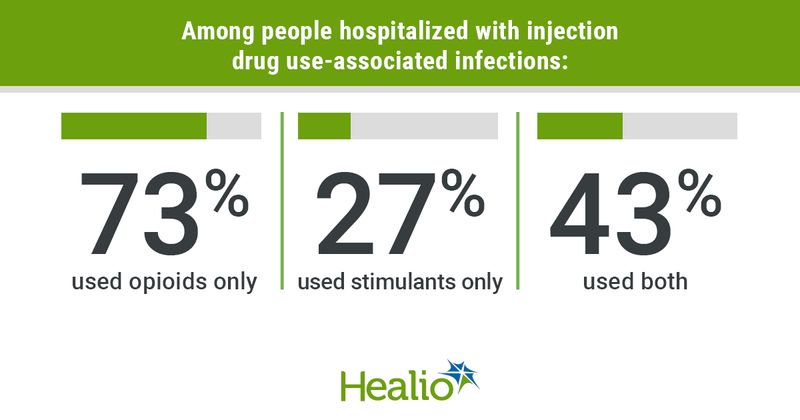Injection drug-related infections vary based on types of drugs used
A 2-year study involving more than 22,000 patients hospitalized with injection drug use-related infections in Florida revealed differences in clinical characteristics depending on the types of drugs used.
The study showed that injection opioid use remained an important cause of infections among people who inject drugs (PWID), but also that almost half of infections involved patients who also injected stimulants, explained David P. Serota, MD, MSc, an assistant professor of clinical medicine in the division of infectious diseases at the University of Miami Miller School of Medicine. More than a quarter of patients used only stimulants.

“In my clinical practice as an infectious disease doctor, I see many patients with infectious complications of injection drug use, including endocarditis, osteomyelitis, and skin and soft tissue infections (SSTI),” Serota told Healio. “Many times, the health care system spends a great deal of effort and money on treating the acute infection while leaving the underlying substance use disorder (SUD) unaddressed.”
Serota said there is a growing recognition that treating SUD is a critical component of improving outcomes among PWID with severe infections and that the next step is to understand the best way to treat patients’ SUD and infections together. Serota and others have argued for a new ID subspecialty covering addiction.

The current study included 22,856 PWID hospitalized in Florida in 2016 and 2017. Serota and colleagues grouped patients based on substances used — opioids, stimulants, or both — and tracked their outcomes.
“Anecdotally and based on some prior literature, we noticed that PWID with infections who used stimulants seemed to have more difficult clinical courses,” Serota said. “With this study we took a big-picture view.”
The study showed that opioid use alone or with stimulants was present in 73% of hospitalizations, stimulant use alone or with opioid use was present in 43% of hospitalizations, and 27% of patients used only stimulants.
According to the study, PWID who used both opioids and stimulants were youngest, most uninsured, had the highest rate of endocarditis (16%) and hepatitis C (44%). Additionally, 25% of opioid plus stimulant users had patient-directed discharge versus 12% for those using only opioids.
Additionally, the study demonstrated that SSTI was present in 50% of hospitalizations, sepsis/bacteremia in 52%, osteomyelitis in 10%, and endocarditis in 10%.
“PWID hospitalized with infections due to injection drug use have different characteristics and outcomes when categorized by whether they use opioids, stimulants, or both,” Serota said. “In the absence of highly effective medical treatments for stimulant use disorder, we must focus on harm reduction interventions — such as syringe services programs — to help prevent these infections.”
